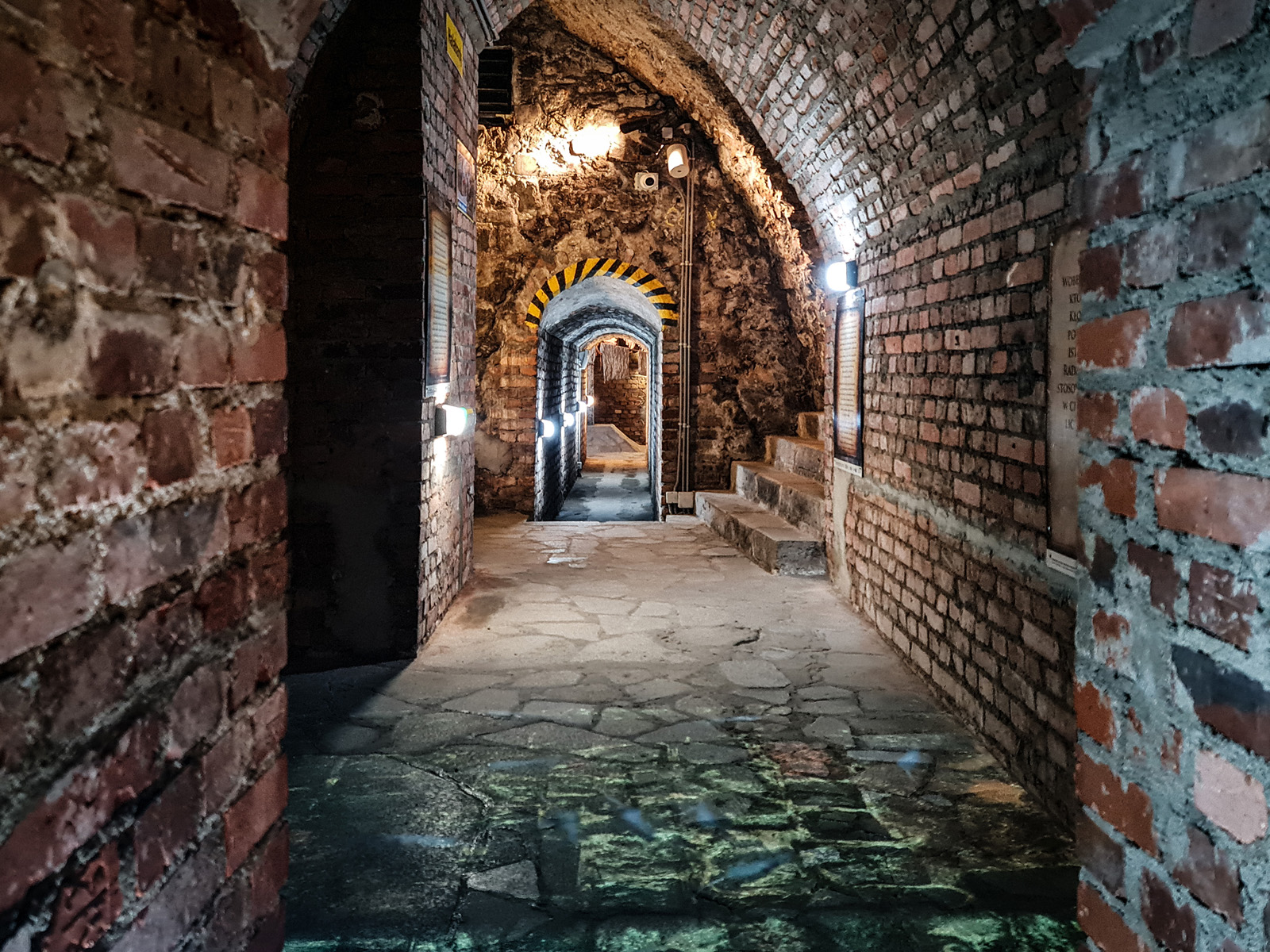The 1000 Years of Poland Underground Tourist Route was mapped out in Kłodzko’s underground labyrinth in the 1960s. The route runs from Czeska street at the feet of the fortress to Zawiszy Czarnego street and is approximately 600 metres long. The history of its development is very interesting, as is the story of its adaptation for tourism purposes.

The medieval Kłodzko came into existence at the feet of the gord on Fortress Mountain. Its location on the intersection of trade routes was beneficial to trade and crafts. Numerous merchants and craftsmen had built their homes in the city, which was surrounded by a wall and the Nysa Kłodzka River. The narrow tenements served as residences and workplaces to entire families, servants, apprentices, and students. There was little space and the property was at risk of being destroyed in one of the frequent fires. The people of Kłodzko started to move downwards by digging spacious cellars under their houses, which was rather easy because of the ground was composed of postglacial remains and was very soft.
The constantly low but above-freezing all year round temperatures in the undergrounds made them perfect for storing food and other goods. The flavour of Kłodzko’s beer benefited greatly from being able to mature in the cold cellars. Certain businesses like bakeries were also moved underground for safety purposes: this would reduce the risk of accidental fires. The underground corridors were used to deliver goods right to the stands surrounding city hall. The deep undergrounds also came in handy during the numerous wars in the Kłodzko Land and provided shelter to the people and their most valuable belongings.
Between the 13th and 17th centuries, the people of Kłodzko were building deep cellars under the city, some as deep as 30 metres down. They developed a dense and multi-storey system of corridors and chambers. However, the prominence of the underground storage space would gradually decline. Kłodzko would lose its medieval nature, grow, and be subject to modernisation.
After World War II, the previously German Kłodzko was now in Poland. The Polish settlers who started arriving in 1945 had no idea about the underground labyrinth beneath Old Town and the Germans leaving the city had forgotten about it. And it may have remained forgotten for quite some time had the Old Town tenements not started to act up.
In the early 1950s, their walls started to crack and collapse. The residents had to abandon their homes and the buildings had to be deconstructed. As it turned out, the poor condition of the tenements was not only due to irregular renovations and maintenance. The tenements were damaged by the rainwater flowing down from the Kłodzko fortress and the unstable ground weakened even further by the expanse undergrounds. Then, in 1958, the experts of the Kraków AGH University of Science and Technology came to the rescue. First, the undergrounds were examined by speleologists and scuba divers, who mapped out the corridors in detail. These maps were used by engineers to develop the underground reinforcement concept. The reinforcement campaign was launched in 1962 and the underground corridors and chambers were then gradually drained and filled. The plans of the AGH experts were carried out by miners of the Wałbrzych Mining Enterprise, who were able to reinforce the undergrounds, stabilise the ground, and preserve numerous beautiful historical tenements from being destroyed. During the work, someone suggested to leave some cellars unfilled and open them to tourists.
In 1966, on the 1000 anniversary of the Baptism of Poland, the Underground Tourist Route was mapped out and given the name of 1000 Years of Poland. It was opened to visitors in 1976.
Today, as you walk around the undergrounds, you can feel the atmosphere of the bygone Kłodzko: you can hear town music, tavern goers, and sounds of the fair. You can see the townsfolk of the past – the baker, the laundress, and the executioner. You can visit the merchant's trading office, the tavern, the armoury, and the torture chamber equipped with horrifying devices.
You will also encounter some completely different underground inhabitants, who appear as animated images. Who are they? See for yourself.
 English
English  Polski
Polski  Deutsch
Deutsch  Český
Český 

